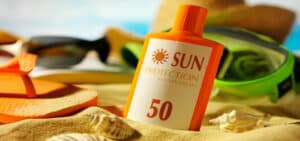You might not consider nail painting a chemical process, but it involves more chemicals than you think. Actually, we don’t have chemical-free nail polish. Even conventional nail polishes contain polymers and solvents. A few minutes after you apply them, the solvent evaporates and the polymer forms a tiny film on your nail. In this article, we want to discuss about the nail polish chemicals.
History
Actually, nail polish has changed since its first production. The first nail adornment dates back to 5000 years before Christ. In ancient Egypt, the color of the nail was a sign of a person`s social status. At that time, only people of high society could paint their nails red. However, the first nail polish was developed in China, 300 years before Christ. They produce it with egg white, gelatin, beeswax, and vegetable dyes. Since 1930, the process of producing nail polish has changed a lot. From then on, chemists use some chemical ingredients, which are as follows:
Nail polish chemicals
In fact, nail polish consists of a film former, plasticizer, solvent, and colorant. In this part, we are going to tell you about the nail polish chemical list.
Plasticizers
The role of plasticizers is to keep the product soft and flexible in the bottle. Tricresyl phosphate, dioctyl phthalate, and dibutyl phthalate can be used in nail polish.
Primary film-former
The role of the primary film former is oxygen availability. These layers can absorb oxygen, which is important for nail health. Nitrocellulose is widely used as a primary film-forming agent in nail polish formulation. Methacrylate polymers and vinyl polymers can also be used as film formers.
“Nitrocellulose is the most commonly employed primary film-forming agent in nail lacquer because it produces a shiny, tough film that adheres well to the nail plate.”
Secondary film former
The secondary film is added to make the nail polish flexible. Formaldehyde, acrylate, vinyl resins, and polyamide are the ingredients that can add resistance to the nail polish. Earlier, it was common to use formaldehyde and methacrylate compounds. However, since studies have shown their allergy to contact dermatitis, you can rarely find their name on the ingredient label. Nowadays, it has become much easier to find nail polish without formaldehyde.
Coloring agents
Both organic and inorganic chemical materials can be used for the nail polish pigment. Chromium oxide, titanium dioxide, and manganese violet are some examples of colorants.
Solvents
All of the ingredients should dissolve in the solvent. How long does it take for your nails to air-dry? The answer to this question depends on the amount and type of solvent used in the formulation. Ethyl acetate, butyl acetate, toluene, and propylene carbonate are the most common solvents in nail polish. They evaporate after a few minutes and leave a thin layer on the nail.
Harmful chemicals in nail polish
Researchers reported that chemical substances in nail polish have the capability of being absorbed by the body, but there is not enough evidence to show whether the amount of absorption is high enough to cause a negative health effect or not.
Formaldehyde resin, dibutyl phthalate, and toluene are examples of nail polish chemicals to avoid. Additionally, if you want to use nail polish during pregnancy, it is better to avoid these chemicals.
Nail polish remover chemicals
In order to remove nail polish, you need to use nail polish remover, but do you know what chemicals it consists of?
- Acetone: Acetone compromises 30–60% of the ingredients. It breaks down nail polish and removes the hard film on the nail.
- Ethyl acetate: This chemical compromises 10–35% of the formulation. We can also find this chemical substance in acetone-free nail polish remover.
- Ethyl alcohol: 5-20% of the nail polish remover contains ethyl alcohol. It helps dissolve glycerin in acetone.
- Glycerin: It retains moisture and takes care of your nails. There is 6–10% glycerin in the nail polish remover.
Also, there is 8–12% water in the nail polish remover ingredients.
The bottom line
The art of nail polish painting has changed a lot since the first formulation. Nowadays, we have primary film former, secondary resin, plasticizer, solvent, and colorant in the ingredient list, and each of them has its own special role. When you apply nail polish, after a few minutes, the solvent evaporates and the other ingredients make a tiny film on your nail surface. But you should pay attention to some chemicals, such as formaldehyde, which can cause an allergic reaction.
Frequently asked questions
Which chemical is used in nail polish?
In fact, nail polish consists of a film former, plasticizer, solvent, and coloring agents. All of the ingredients should dissolve in the solvent.
Are the chemicals in nail polish harmful?
Formaldehyde resin, dibutyl phthalate, and toluene are examples of nail polish chemicals to avoid. Additionally, if you want to use nail polish during pregnancy, it is better to avoid these chemicals.
What chemical makes nail polish harden?
The secondary film is added to make the nail polish flexible. Formaldehyde, acrylate, vinyl resins, and polyamide are the ingredients that can add resistance to the nail polish.
Is toluene safe in nail polish?
Toluene is used to make the nail polish cover tough. However, it is better to avoid nail polishes that use toluene in their formulation.
Is there toxic free nail polish?
Researchers reported that chemical substances in nail polish have the capability of being absorbed by the body, so you should use nail polishes without harmful ingredients such as formaldehyde and toluene.






2 Responses
What metals are in nail polish?
There can be aluminium, lead, cadmium, and manganese in the nail polish.